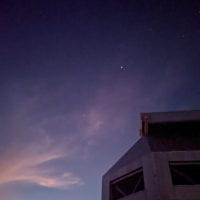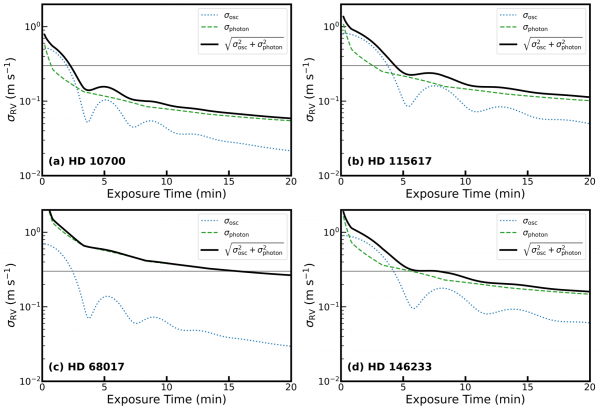Target Prioritization for the NEID Earth Twin Survey

The NEID Earth Twin Survey
The NEID spectrograph, designed and built by a team led by CEHW Professor Suvrath Mahadevan, was installed at Kitt Peak National Observatory in late 2019 and will soon be fully commissioned for science observations. Over the next few years, Mahadevan and the NEID team will spend hundreds of hours surveying a set of bright, Sun-like stars to search for Earth-mass exoplanets as part of the NEID Earth Twin Survey, or NETS. The time allocation for the survey is large, but there are many tantalizing targets to choose from. And they can’t all be observed. So how does one decide which stars are worth observing?
In a new study soon to be published in the Astronomical Journal, CEHW graduate student Arvind Gupta lays out a target prioritization strategy for NETS that seeks to answer this question. This strategy relies on three quantitative metrics that can be used to determine which stars offer the greatest potential for the discovery of new exoplanets.
Target Prioritization
The first prioritization metric, referred to by the authors as the “discovery space”, takes into account previous radial velocity exoplanet searches. Many of the most obvious targets for NETS have already been extensively studied, and easy-to-detect exoplanets orbiting these stars have already been discovered. If a star has been observed hundreds of times by a previous survey, we’re not likely to find any new exoplanets for quite a while. But if the star has only been observed a dozen times, there are still plenty of spaces that undiscovered planets could be hiding. By comparing data collected by past searches to the data expected to be collected by NETS, the authors are able to place limits on (a) which classes of exoplanets would have already been discovered and (b) which classes of exoplanets can be found using NEID. These limits reveal which stars are most likely to host undiscovered exoplanets that are accessible to NETS.

A comparison of the discovery spaces for two potential NETS targets. Exoplanets in the red shaded region in log P – log M sin i space should have been discovered by past surveys, while the blue shaded region marks the new discovery space that NETS will probe. HD 12051 (panel a) has been thoroughly studied by past surveys while HD 161797 (panel b) has been observed more sparsely.
Next, the authors consider the “cost” of each target, which is more explicitly defined as the observing time required to reach the same measurement precision for every observation. This cost will differ from star to star as a function of various stellar properties. Brighter stars, for example, require less observing time than faint stars, because the measurement precision depends in part on the Poisson statistics of the number of photons collected during an exposure. In calculating the cost, the authors also consider noise contributions from p-mode oscillations, which are periodic expansions and contractions of the stellar surface that induce varying radial velocity signals. The authors describe how p-mode oscillations, along with other intrinsic stellar processes such as surface granulation and magnetic activity, can hide radial velocity signals from exoplanets. They also highlight, however, that the timescales for p-mode oscillations are short enough that the periodic variations can be averaged out with carefully-selected exposure times.

Observational costs for various NETS targets. The requisite exposure time depends on the combined p-mode oscillation signal and the photon noise precision.
The third and final metric is an empirical measure of the radial velocity variability of each star due to the intrinsic processes mentioned above. One of the main advantages of NEID is the high instrumental precision that it provides, but it will be difficult to make use of this if the stars themselves are the main source of noise. Again using data from previous radial velocity exoplanet searches, the authors calculate the observed level of stellar noise for each potential NETS target.
Favoring stars with large discovery spaces, low costs, and low levels of intrinsic noise, the authors used these metrics to produce a target list for NETS.
Observations
In the final sections of the paper, Gupta discusses several key observing strategies that the NEID team will employ while carrying out the survey, which is underway at Kitt Peak as of this month. These include considerations for spectral contamination from scattered sunlight, which can be a concern when observing during twilight or during a full moon. Members of the NEID team are excited to see what the survey yields and for the many new discoveries to come.
Read the full paper here: https://arxiv.org/abs/2101.11689
Credit: Arvind Gupta




